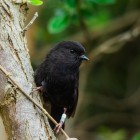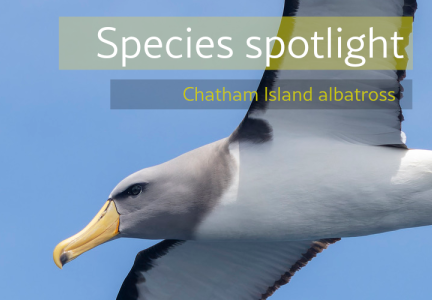
Blog and news
Species Spotlight: Chatham Island albatross
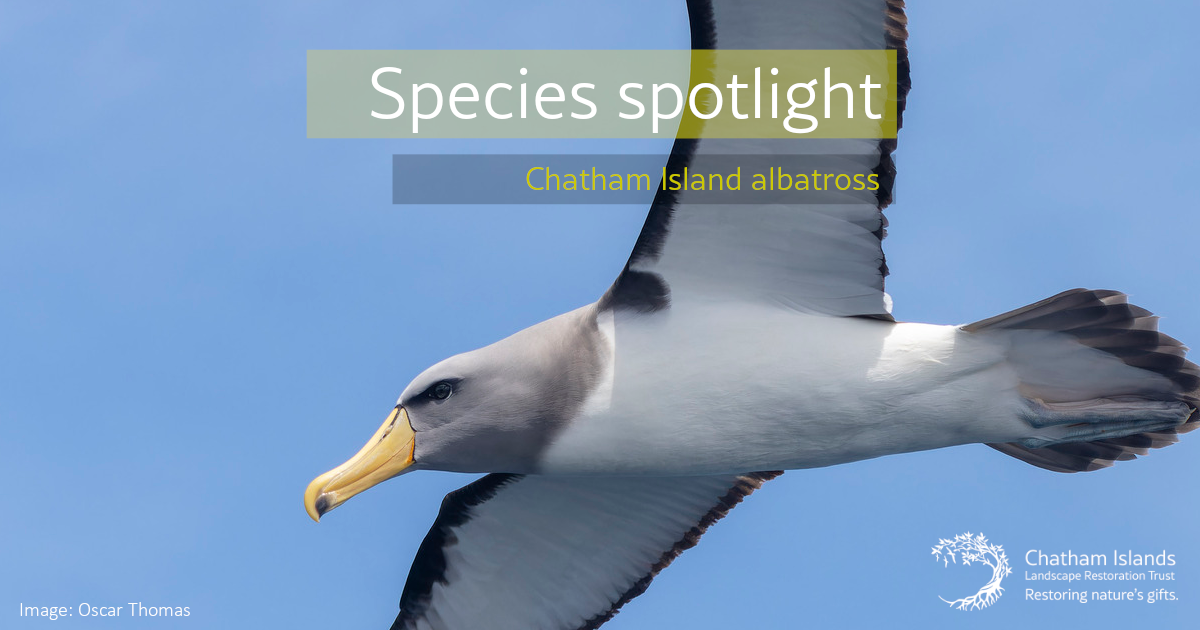
This month we're bringing you one of the iconic Chatham birds, an albatross named after the archipelago itself. Here are a few interesting tidbits about the Chatham Island albatross.
They’re good looking.*
The Chatham Island albatross or mollymawk is a distinctive and rather handsome manu.
They’re a medium-sized toroa/albatross with a dark grey head and bright yellow bill. Their wings are darker grey on the top; underneath, their wings are white with a dark edge. Their eyes have a thick black line extending out towards their bill.
*Arguably, this applies to all albatrosses (except maybe when they’re going through that awkward my-grown-up-feathers-are-still-coming-in phase).
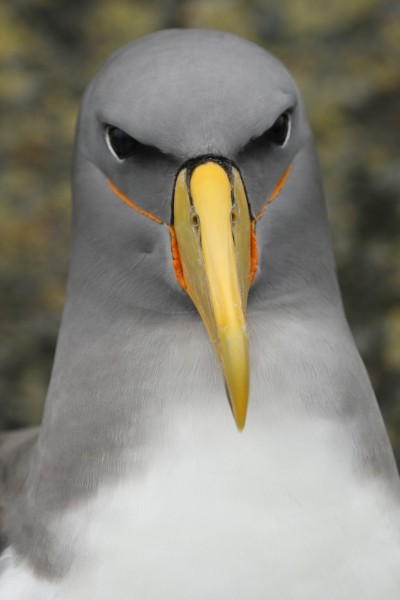
Chatham Island albatross face Image: Dave Boyle
All mollymawks are albatrosses, but not all albatrosses are mollymawks.
This bird is known as the Chatham Island albatross and the Chatham mollymawk. Toroa is the Māori name for albatross.
Just to get it clear – mollymawks are a type of albatross (in the genus Thalassarche). Mollymawks are a medium-sized albatross, much smaller than the great albatrosses (like the Royal and wandering albatross species).
Mollymawks are restricted to the southern hemisphere, where they’re the most common kind of albatross. There are nine species of mollymawk, seven of which breed in Aotearoa.
They put their young on a (poop) pedestal.
Chatham mollymawks lay a single large, white egg. They lay it on a nest pedestal, which they build themselves from soil, vegetation, guano, and occasionally the particularly bogan ones will use bone. This pillar of poop (yes, ok, other stuff too) can reach up to 1m high.
Given that they nest on rocky ledges and steep slopes, a raised and softer nest like this makes sense.
The birds breed in close proximity, and the slopes allow adults to land near their nests without disturbing other nests beside them.
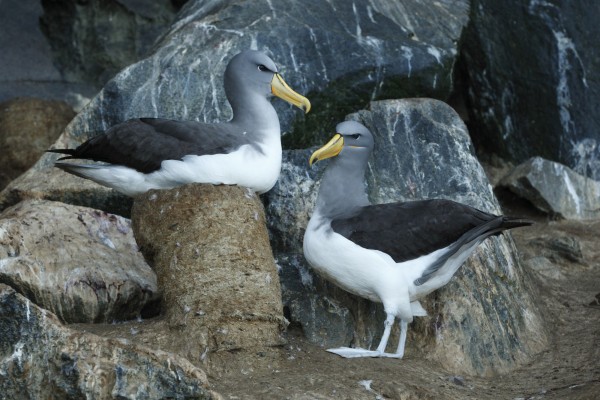
A CI albatross pedestal nest Image: Dave Boyle
They eat squid at night.
They feed on squid, fish and krill. Although they’re mostly surface feeders, they will shallow dive for food. However, squid are deep-sea creatures and the Chatham albatross will only dive to about one metre deep. This means the albatrosses tend to catch squid at night, when large shoals come near the surface.
They only breed in the Chathams, on one giant ocean rock.
They're endemic to the Chathams. The entire population breeds on The Pyramid, an isolated rock stack just south of Pitt Island. There is a record of a pair attempting to breed in the Snares Islands.
They share the Pyramid with Salvin’s albatross (another mollymawk). There’s even one record of a mixed-species pair caring for a chick on a nest.
There have been attempts to establish a new colony on mainland Chatham, at a protected site at Point Gap. Chicks were brought by fishing boat to the location, placed in little “flower pot” nests, and manually fed and cared for by people. Some of these birds have returned to the Pyramid.
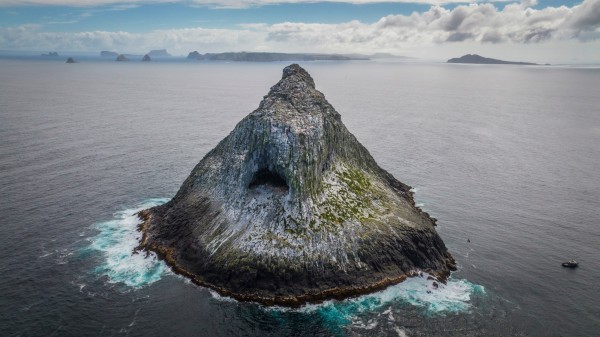
The Pyramid. Image: Air Chathams
They’re seafarers.
These birds are truly pelagic. They spend most of their life at sea, only returning to land to breed. At sea they’re solitary birds and don’t follow ships the way some other albatross species do. In the waters just off the Pyramid, however, they sometimes float together in rafts of up to several hundred.
Outside of their breeding season (August through to May) they migrate to warmer waters off Chile and Peru – although vagrants have been spotted around eastern Australia and southern Africa.
They’re doing ok at the moment, but…
Chatham mollymawks are ranked Naturally Uncommon. They have a stable population of around 5300 nests on The Pyramid, but having just one population site makes them especially vulnerable.
Severe storms (which aren’t infrequent on the Chats) can strip their breeding sites of soil and vegetation, leaving nothing for the albatross to build their nests with. This means they lay eggs directly on rock, which often results in breakages. When storms come during the breeding season, it can have an impact on chick and adult survival.
They also face the same challenges as albatrosses and other seabirds. Pollution and unsustainable commercial fishing practices are a real threat to their future. Another is the impacts of climate change. For example, the Chatham Island albatross is designed for colder weather. In February to March chicks are covered with down, which means they can overheat and die of heat stress as climate changes makes summers hotter.
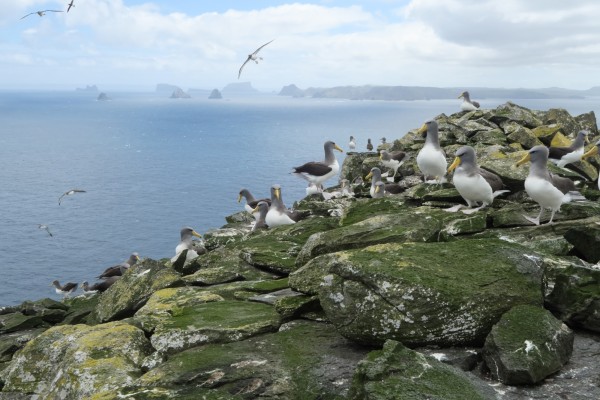
CI albatrosses on the Summit of the Pyramid. Image: Dave Boyle

